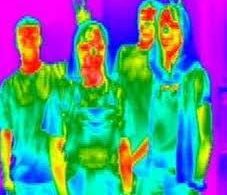In the realm of scientific breakthroughs, the study of photosynthesis has long captivated researchers. This remarkable process, by which plants convert sunlight into energy, has remained a source of mystery. However, a cutting-edge technique known as quantum visualization is now revolutionizing photosynthesis research, offering unprecedented insights into the intricate mechanisms at play. With its ability to unveil the hidden secrets of this vital biological process, quantum visualization is shaping our understanding of nature and paving the way for groundbreaking advancements.
Photosynthesis, the process by which plants harness sunlight to produce energy, is a cornerstone of life on Earth. Scientists have long sought to unravel its intricacies, aiming to harness its potential for sustainable energy production and understand its impact on the environment. However, the complex interplay of quantum mechanics within photosynthesis has posed a significant challenge to researchers.
Enter quantum visualization—a groundbreaking technique that combines advanced computational modeling with quantum theory. This approach allows scientists to simulate the quantum processes occurring during photosynthesis, offering a visual representation of the energy transfer within the intricate molecular machinery of plants.
By employing quantum visualization, researchers can examine the behavior of individual molecules involved in photosynthesis with unprecedented detail. They can observe the quantum phenomena responsible for efficient energy transfer and understand how these processes adapt to various environmental conditions.
One of the key discoveries made possible by quantum visualization is the role of quantum coherence in photosynthesis. Coherence, a quantum property referring to the synchronized behavior of particles, has been found to play a crucial role in the efficiency of energy transfer within photosynthetic systems. This insight challenges previous assumptions and provides a deeper understanding of the underlying mechanisms driving photosynthesis.
Quantum visualization also sheds light on the phenomenon of quantum tunneling, whereby particles can “tunnel” through energy barriers that would typically prevent their passage. Researchers have discovered that quantum tunneling plays a vital role in optimizing energy transfer between molecules during photosynthesis, allowing for greater efficiency and resilience in light harvesting.
Moreover, this innovative technique has unveiled the delicate balance between quantum coherence and environmental factors. Scientists can now explore how temperature, light intensity, and chemical interactions influence the quantum behavior within photosynthetic systems. Such knowledge is invaluable for designing strategies to enhance the efficiency of solar energy conversion technologies and develop sustainable energy solutions inspired by nature.
The implications of quantum visualization in photosynthesis research extend beyond the realm of renewable energy. By unraveling the intricacies of nature’s most efficient energy conversion process, scientists gain insights into fundamental quantum phenomena that could potentially revolutionize fields such as quantum computing and nanotechnology.
Critics argue that quantum visualization, while groundbreaking, still has limitations. The complexity of photosynthesis poses challenges in accurately modeling all aspects of the process, and the need for extensive computational resources remains a barrier to widespread implementation. However, researchers are continually refining the technique and leveraging advancements in quantum computing to overcome these obstacles.
As journalists, it is crucial to approach the topic of quantum visualization with a nuanced understanding. We must verify information by consulting experts in the field and scrutinizing peer-reviewed research. Presenting accurate reporting that showcases the potential and limitations of this innovative technique ensures the public gains an informed perspective on its implications.
Quantum visualization is unlocking the secrets of photosynthesis, offering a quantum window into the inner workings of nature’s remarkable energy conversion process. As our understanding of these fundamental processes deepens, the possibilities for sustainable energy, quantum technologies, and our relationship with the natural world expand. The impact of this revolutionary technique extends far beyond the confines of the lab, driving us closer to a greener and more enlightened future.












